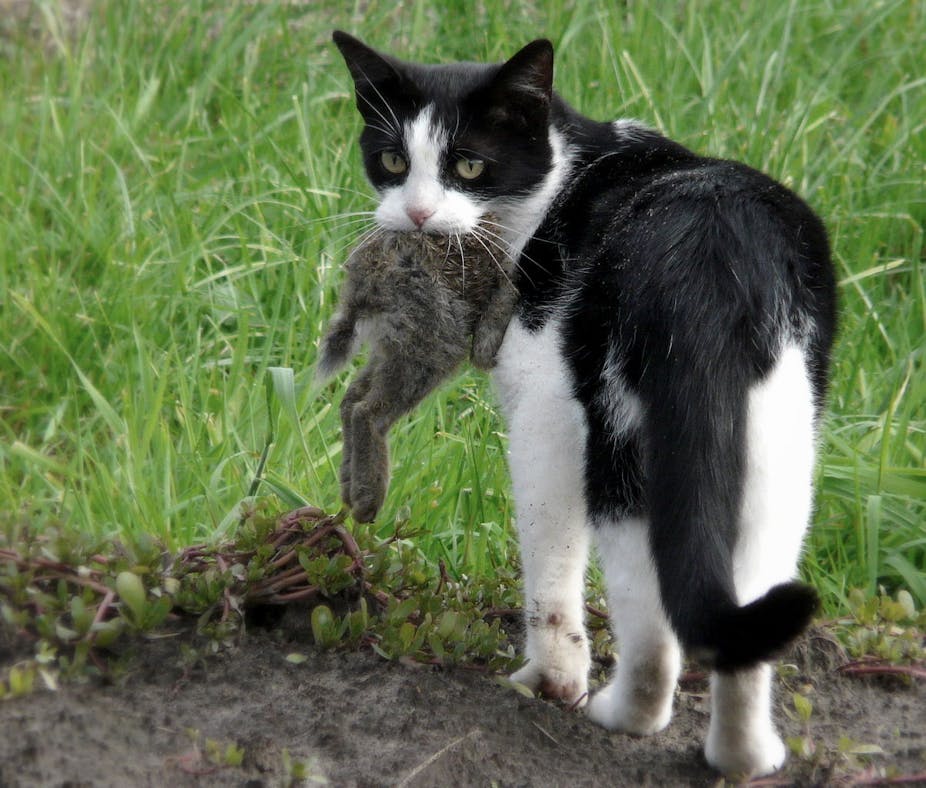It may surprise you to know that man’s best friend is not a friend of wildlife. Or that those cute cats from online videos are often mass killers. The dark side of pet ownership is something not usually addressed but in wildlife conservation it has become a burning issue. Last week the Australian government named domestic cats as one of the major threats to its unique wildlife.
The problem of domestic cats and dogs killing wildlife is massive. A recent study in the US found that cats, especially stray cats, kill four billion birds and up to 21 billion mammals annually. If they were just killing mice and rats, which are invasive species, no-one would be concerned but no – they are also killing native wildlife and could make some species extinct. Cat and dog ownership is a global phenomenon and no country is immune.

My research group in Brazil did some studies into why greater rheas, a large flightless bird, were being wiped out in Minas Gerais and we discovered the problem was farmer’s dogs. Cattle pasture makes ideal habitat for these birds. As part of our research we interviewed farmers about the problem and the response was always the same: their neighbour’s dog was to blame for killing this species but never their dog. The problem in regions with such rich biodiversity is that dogs in the countryside might technically be pets but in reality they are feral. And their instinct to hunt, especially if they are not being fed regularly takes over.
Dogs hunt wildlife, but they also kill it indirectly by spreading disease. Studies conducted in Brazil have shown that they spread diseases such as canine distemper to wild endangered canines such as maned wolves. In Ethiopia, such diseases are among the most serious threats to the world’s rarest canine, the Ethiopian wolf.

Scientists often use camera traps to estimate the numbers of medium-to-large mammals in the wild. I have many colleagues who employ this technology around the world. And as a lover of wildlife I am always keen to see their photographs but instead of seeing peccaries, deer or even jaguars, the most common photographically captured animal is the domestic “feral” dog. The problem is so pronounced that Matthew E Gompper, professor of Mammalogy at the University of Missouri has edited a book on the subject.
Cats appear to kill more wildlife globally than dogs. This no doubt relates to the culture of people letting their cats roam free. Even well-fed pet cats will go out and hunt and data from a study in the UK estimated that domestic cats kill a total of 92m animals annually and this has an impact on native species conservation.
The culture of letting cats and farm dogs roam is difficult to break. In some countries this problem has been dealt with by culling the offending animals. But this does not always work – in Brazil, this is not done because the owners of such animals may kill wildlife in revenge. In countries like New Zealand where the native wildlife never evolved with such predators and is essentially defenceless, culling may be the only solution if flightless parrots such as the kakapo are to be saved from extinction.

We could of course sterilise the offending animals, but in many countries around the world this would require the owner´s consent. Plus with dogs the problem is with males – if you castrate them their behaviour changes, they become less aggressive and this may result in the influx of dogs from neighbouring regions. However there is now a single injection that sterilises male dogs and does not change their behaviour. Whenever possible, dog numbers should be kept under control.
In more developed countries without large remote wildlife areas the problem can be dealt with by the law. Dogs are supposed to be under the control of the owner at all times in public. However, I have unfortunately witnessed people allowing their out-of-control dog to chase wildlife in the UK. But with education and law enforcement this situation should be a minor issue.
Pet cats are another issue. Putting a bell or sonic device on their collar halves their predatory efficiency, however, with experience cats can improve their hunting despite such devices. There are even cities in Australia that operate cat curfews. And farmers could be encouraged to control better the cats they keep for vermin control.
We will never completely stop pet carnivores killing wildlife, but through responsible ownership and control programmes we can reduce the number of victims from the billions to the millions: removing cats and dogs from wildlife’s most dangerous threat list.

